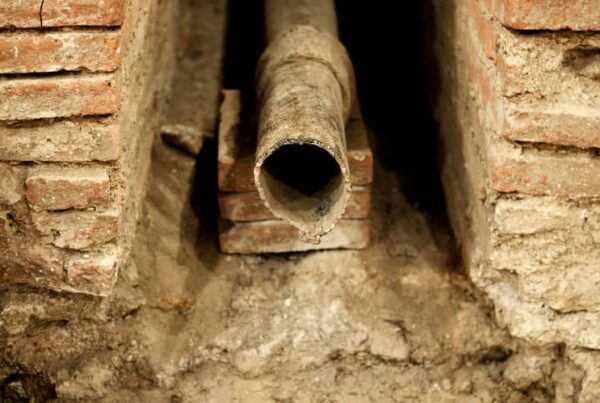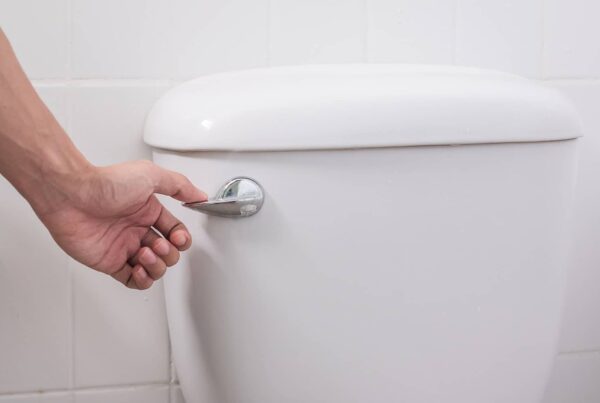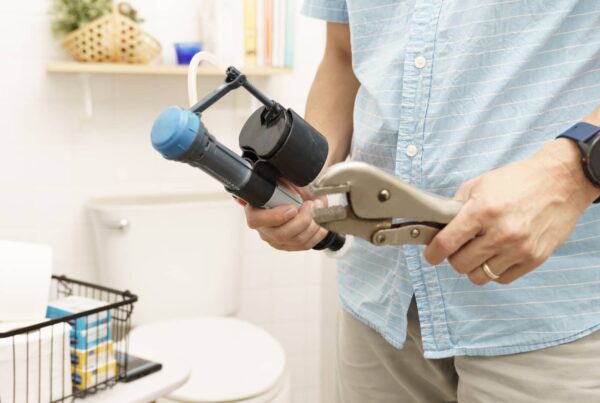
Getting to know if a vent stack can have bends in it is not a priority of most homeowners. In fact, homeowners typically do not take time to even understand how plumbing is tied into vents. Looking at your roof you will see various vents coming out of the roof. These vents have a variety of purposes. Vents serve your plumbing as well as appliances such as your appliance dryer. Can a vent stack have bends in it? Vent stacks can only have 45-degree angled piping to route horizontal pipe and connect to vertical pipe.
Let’s take a look below at what all of this means.
Why Is Venting Important
Venting pipes are vital to your health and safety in a home. Plumbing vent pipes are especially necessary in order to remove all sewer gases from your sewer plumbing. Plumbing air vents are connected to your plumbing. In fact, these vents push air pressure into your plumbing as you flush your toilet. The air pushes your waste and water through the sewer pipe and towards to city sewer pipe connection.
Your drain-waste-vent pipe is meant to carry waste and water through your home’s plumbing system while keeping fumes and gurgling out. So, if you plan to remodel your home’s plumbing system, make sure you consult a professional licensed master plumber. They can inform you as to which plumbing choices make the most sense for the setup of your home.
The drain-waste-vent pipe is run vertically and connected to your horizontal pipes. The pipes are run horizontally so that water can flow directly to the city sewer system so don’t ever use a tight 90-degree elbow. This is often called a vent elbow and used if the joint of your pipes is below the water level of the sink. Your plumbing vent pipes must be installed straight on the vertical as this keeps fresh air in and all drains in the house working properly.

What Are The Venting Types
There are a variety of vents that run throughout your home. Each homeowner should begin to understand which vents does what. Whether you are buying a home or getting to know more about your current home, vents should be kept clear of debris and in good working condition. Let’s take a look at the vent types in your home.
- True Vent – a vertical pipe that is attached to a drain line. It travels through the roof with no running water. Fixtures on the top floor of a home are closer to the upper stack and this serves as a great vent option.
- Auxillary Vent – attached to the drain line nearest to the fixtures and goes up and over your main vent. This can attach directly behind the fixture or to your horizontal drain line.
- Common Vent – found on back to back sinks and tied together by a sanitary cross. These fixtures are found on opposite walls.
- Loop Vent – used when you have a freestanding sink.
- Air Admittance Valve (AAV) – when waste is drained, air is let into the vent pipe. After air is allowed into the vent pipe, gravity closes the vent, keeping the sewer gases from releasing back into the room. Code restrictions determine how many fixtures can be vented this way. These are now allowed per most local building codes. An AAV can now replace vent lines.

Can A Plumbing Vent Pipe Have Bends
Understanding how your plumbing vent pipes work is important. If you don’t know the proper way that these pipes should be installed, then you should stay away from this project. Plumbing vent pipes are meant to be straight and vertical. Under no circumstances should a plumbing vent pipe be installed with a 90 degree angle PVC joint.
Any angles should be limited to one 45-degree angle from horizontal pipe if the pipe needs assistance running through the attic and up through the roof. Plumbing vent pipes are used to allow fresh air into your plumbing system so that all drains work in the house.
Other Recommended Maintenance
Now that you have an understanding of plumbing vent pipes. It is a good idea to look into how to increase water pressure in your kitchen sink. The plumbing vent pipes could be a reason for reduced water pressure. You might also consider replacing your kitchen sink’s aerator.
Next, consider that a reason for poor water pressure. How fast do tree roots grow into the pipes. Luckily, your local home inspection team can conduct, a sewer scope inspection. This allows you to find the infiltration of roots that has caused you to develop a clog in your pluming. Getting a sewer scope inspection allows you to locate the specific site of damage or backup of waste.
Lastly, look into all of your plumbing. Your builder may have used PEX pipe plumbing so understanding which plumbing pipe is best for your home is important. Because there is a variety of plumbing options, make sure to ask questions of your master plumber or builder on new home builds.

When Do I Call A Professional
Although you might feel like a do-it-yourself (DIY) project could exist when it comes to your plumbing vent pipes. You should call on a professionally licensed master plumber. There are building codes that must be followed when it comes to plumbing vent pipes. Any mistake made by the homeowner could cost a lot of damages.
The most basic error could cause an airlock in pipes and your plumbing to fail. In this case, call on your local home inspection team to review your entire home’s plumbing system. Also, they will be able to tell if any pipes need replacing and recommend the most reputable master plumber in the area.
Conclusion
Before you make any attempts at plumbing remodeling in your home. Make sure that you understand the various types of plumbing pipes available to you and how they work. Hiring your local home inspection team is a great idea before remodeling.
They can determine if you have other project needs. Hiring a reputable professional licensed master plumber is your best decision for a successful project. Call on Waypoint Property Inspection to conduct a home inspection on your home in Tampa, St. Petersburg, Lakeland, Orlando, Palm Beach, Ft. Lauderdale, and surrounding areas.



